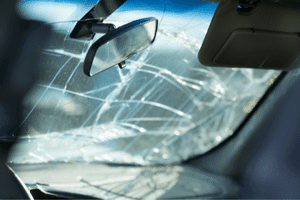
When there is an accident, one of the drivers is considered at fault through negligence or carelessness. Car accident lawyers and insurance companies always look at the evidence to identify the party that was at fault. If you can prove that the other party was at fault, you’ll strengthen your car accident injury claim.
There are supporting pieces that will help you show proof of fault. When you can show proof that your injury was due to the other person’s negligence, you’ll establish that their actions deviated from what a prudent person should do. Here is how to prove fault in a car accident injury claim.
Elements of Negligence
One thing you have to do to prove the fault is by showing that the other driver is to blame for the accident. You need to establish the four elements of negligence to be able to prove who is liable for the accident. To prove negligence, you must show that:
Duty
The first thing is assessing the negligence claim to determine if the at-fault driver had a duty of care to you. The legal duty of care requires that a driver operates their vehicle safely with a level of care.
Breach of Duty
If the defendant breached his duty by doing something that a prudent person would do or not do. The defendant will be found more negligent than the average person if they have known someone has been injured as a result of their actions.
Causation
You also need to show that the defendant caused your injury through their negligence. If the defendant could have foreseen that his actions could cause injury, they’ll be held liable. If the other driver’s actions were an unexpected act of nature or random, then they’ll be deemed unforeseeable. In such a case, the defendant will not be held liable.
Damages
Damages are an element of negligence that requires you to be compensated for the injury. The compensation is usually in monetary terms for expenses like property repair or medical care.
How to Prove Fault
Being able to prove fault will mean the difference between getting compensation or nothing. Gathering evidence of a car accident and reviewing traffic laws will help you prove fault. Here is what you need to prove fault.
Vehicle Damage
Make sure you take pictures of your vehicle before taking it for repairs. You should always take pictures at the accident scene. From the pictures, it will be clear the location of the damage. You’ll have the upper hand when there is rear-ended damage.
Traffic Laws
Make sure you research the traffic laws in your area. Most states have traffic laws on the vehicle code. You can get resources online or in public libraries.
Pictures
You should take pictures from all directions at the accident scene. Get shots from a distance and even close-ups. Document debris, skid marks, and traffic signs.
Witnesses
If there are any witnesses, make sure you get their contact information. You can ask them to write a description of what they saw at the accident scene. You’ll be required to provide an expert witness in your injury cases. The witness helps to provide support for your claim. A doctor can be an expert witness to testify in your case.
Police reports
A responding officer who comes to the accident scene will conduct an investigation and conclude on the party who is at fault. Police reports will come in handy since they offer an unbiased overview of the accident.
No-doubt Liability
In other accidents, it is always clear the driver is at fault and that has led to the accident. Such accidents are known as no-doubt liability.
Rear-end Collisions
If another driver hits you from behind, it is not your fault. The basic rule of the road requires drivers to stop their vehicles safely if there is traffic ahead. If a driver is unable to stop safely, then it means they are not driving safely. In rear-end accidents, the vehicle damage will be enough proof of what happened. However, your carelessness in a rear-end accident will reduce the compensation you’ll get. For instance, if your tail lights were out, then you will be held partly at fault.
Left-turn Accidents
A car that is making a left turn will be liable if it collides with a car that is coming straight from the other direction. Exceptions will occur if:
- The car that was going straight went through a red light.
- The car going straight was going above the speed limit.
- The left turn began when it was safe, but there was an unexpected slowdown.
Get in Touch With an Experienced Personal Injury Attorney
If you or your loved one has been injured in an accident due to negligence, you should pursue a car accident injury claim. Get in touch with an experienced personal injury lawyer to find out more information.